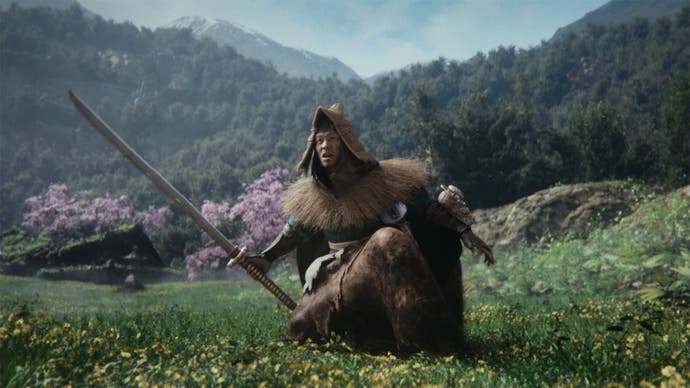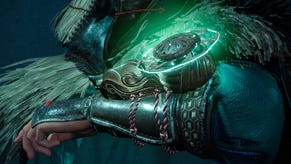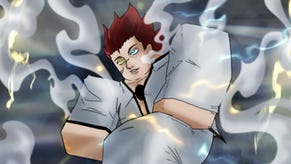Wild Hearts armor, including Kemono Path, Human Path, how to forge and upgrade armor explained
Suit up, hunter - here’s everything you need to know about forging armor upgrades, and how to change its appearance.
In Wild Hearts, your armor isn’t just a visual reminder to other players of the fearsome Kemono you have slain. There’s a satisfying amount of depth to the customisation in EA’s new action RPG that will have you toiling away for precious crafting materials as you look to hone the best build for your hunter.
Boasting a larger than life arsenal of weapons, in Wild Hearts the best offence may not be a good defence but it certainly helps. Choosing the right gear before heading out on a hunt can offer a serious advantage over your target, boosting your resistance to their attacks, negating status ailments, and conferring a variety of passive bonuses.
This Wild Hearts armor guide is a handy primer for anyone looking to learn more about the game’s armor system from forging and upgrades to the best starter picks and changing your appearance.
On this page:
How to get armor in Wild Hearts
Just like weapons, you can craft armor almost anywhere when playing Wild Hearts.
Although Natsume’s forge back in Minato seems like a good place to go for new gear and upgrades, you can assemble a Field Forge while out exploring Azuma. It’s one of the many Dragon Karakuri structures Wild Hearts has to offer, allowing hunters to build self-sustaining camps between Kemono battles.
For the full list of Dragon Karakuri available in-game, see our extensive Wild Hearts Karakuri guide for more information.
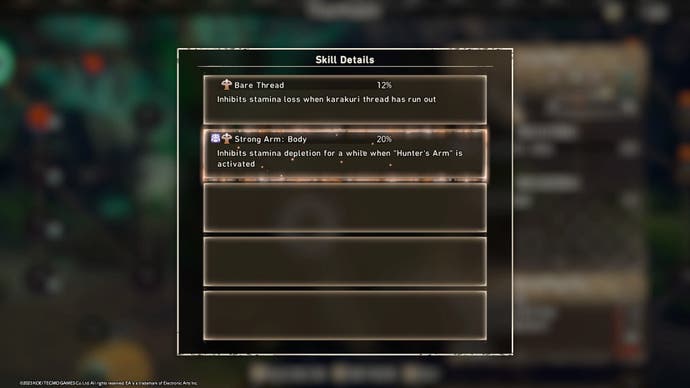
The forge menu is pretty straightforward, each column representing one of the armor sets available for crafting. Every piece of armor has its own unique combination of characteristics including a base defence score, resistance stats for the game’s five different elements, and attached skills.
In order to forge armor you’ll need to gather certain crafting materials, most armor sets inspired by one of the game’s Kemono. It can take a fair few hunts in order to collect the components required to complete a matching armor set, especially as some rare materials can only be earned by cutting off Kemono tails and other parts when they are enraged.
Wild Hearts Armor: Human and Kemono Paths explained
You will notice that every piece of armor in Wild Hearts has either a Human, Kemono, or Neutral alignment, moving you along a sliding scale between the three. In the game’s lore those who want to pursue advances in technology take the former Path whereas those who believe in the balance of nature favour the latter.
How this Path system impacts gameplay isn’t immediately clear when starting out but, needless to say, it can have a significant impact on getting the most out of your weapons and armor.
When viewing either the Forge, you may notice that some attached weapon and armor skills are greyed out with a coloured Path alignment symbol next to them. What this means is that these skills will only activate when wearing armor with a corresponding alignment.
For example, the Wrack Blade upgrade for the Karakuri Katana has an attached skill called Tiger’s Den which boosts attack, but makes it harder to recover from ailments. However, this is a Kemono Path skill and won’t be activated if wearing Human Path equipped armor. This adds a wrinkle to the game’s RPG customisation that some will find frustrating while others will see it as a way to deepen that sense of immersion in the game’s world.
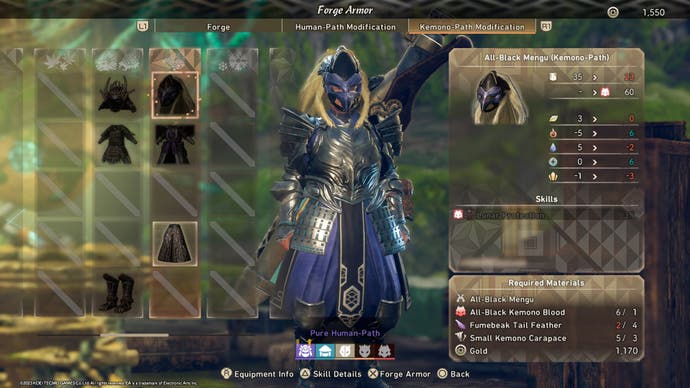
How to upgrade armor in Wild Hearts
Wild Hearts doesn’t feature a typical armor upgrade system. Where weapons can be enhanced using the game’s expansive upgrade tree, armor upgrades work a little differently.
When visiting Natsume in Minato or using the Field Forge, you’ll see that the armor crafting menu has three tabs: Forge, Human Path Modification, and Kemono Path Modification.
Once you have crafted a piece of armor, you can then create both Human and Kemono Path versions of it by accessing the other two tabs. These armor variants not only look cosmetically different, they also offer superior defence and bonus abilities. However, as previously explained, choosing Human or Kemono modifications can unlock/block particular attached skills. It’s not a dealbreaker during the early game though it’s something you’ll want to keep in mind.
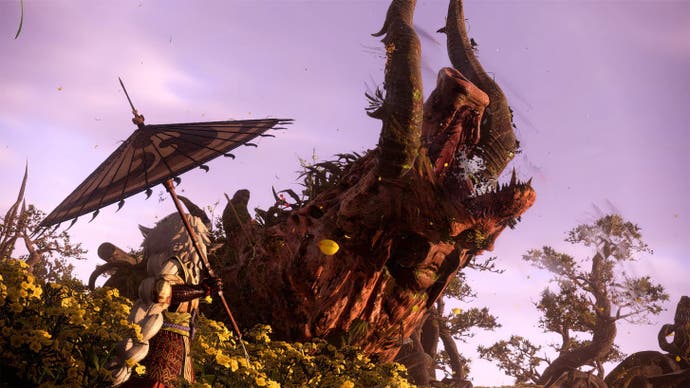
What’s the best armor for beginners in Wild Hearts?
When starting out in Wild Hearts, one of your first priorities should be ditching your hunter’s ragged robes - this samurai-style getup looks cool, but offers little protection against the mythical beasts you’re about to come up against.
As mentioned in our Wild Hearts beginner's tips, you shouldn’t get too hung up on trying to unlock full armor sets, at least not to begin with. You’ll find that as soon as you take down the next Kemono on your kill list, new gear will be available to craft at the forge that is almost always better than what you’re wearing. It isn’t until Chapter 3 that you’ll feel compelled to take a deeper dive into armor stats, how they work, and ways of optimising your build in preparation for those tougher late game battles.
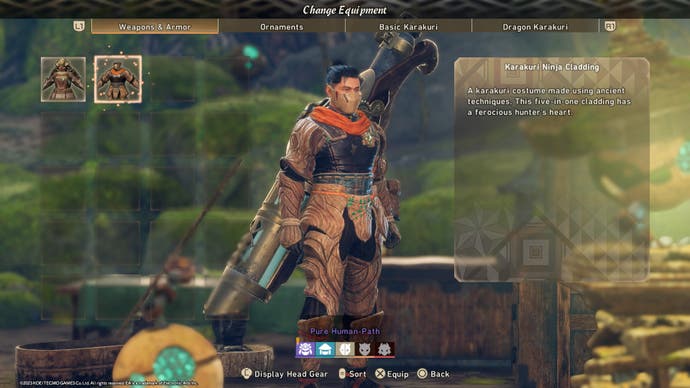
With that said, there are two good armor set options to consider during those first several Kemono encounters. Both the Young Samurai and Basara sets offer a good base defence score and protection against most types of elemental damage, though both are weak against fire which can make your first Lavaback hunt a bit more of a challenge.
Both sets also offer some decent attached skills, raising your base health and attack power, as well as your dodge distance, depending on how you mix and match these armor pieces. On top of that, the crafting materials are fairly easy to obtain as you grind out battles against the Ragetail, Sapscourge, and Kingtusk Kemono. This grinding phase presents a good window to learn the ropes in Wild Hearts while also experimenting with different weapon types. Some of the leftover Kemono parts can then be used to create Human and Kemono Path modifications for your Young Samurai and Basara armor sets.
How to change the appearance of armor in Wild Hearts
The armor designs in Wild Hearts are excellent, especially as you start unlocking Human and Kemono modifications. Chances are, you’ll fall in love with a cool-looking armor but refuse to wear it due to its poor stats or attached skills. Thankfully, Wild Hearts allows you to customise the look of your character equipment, similar to Monster Hunter’s 'Layered Armor' system. However, there are a few hoops you need to jump through.
Note that this option isn’t unlocked until after you complete the main story. Once you have, pay Yatarō a visit - the sulky kid next to Nastume’s forge - to unlock armor. Cladding that will change its appearance. This requires that you have already craft the gear you want to replicate the look of, as well as Magical Orbs and a hefty wad of Gold.
Good luck in Wild Hearts!
